Concept¶
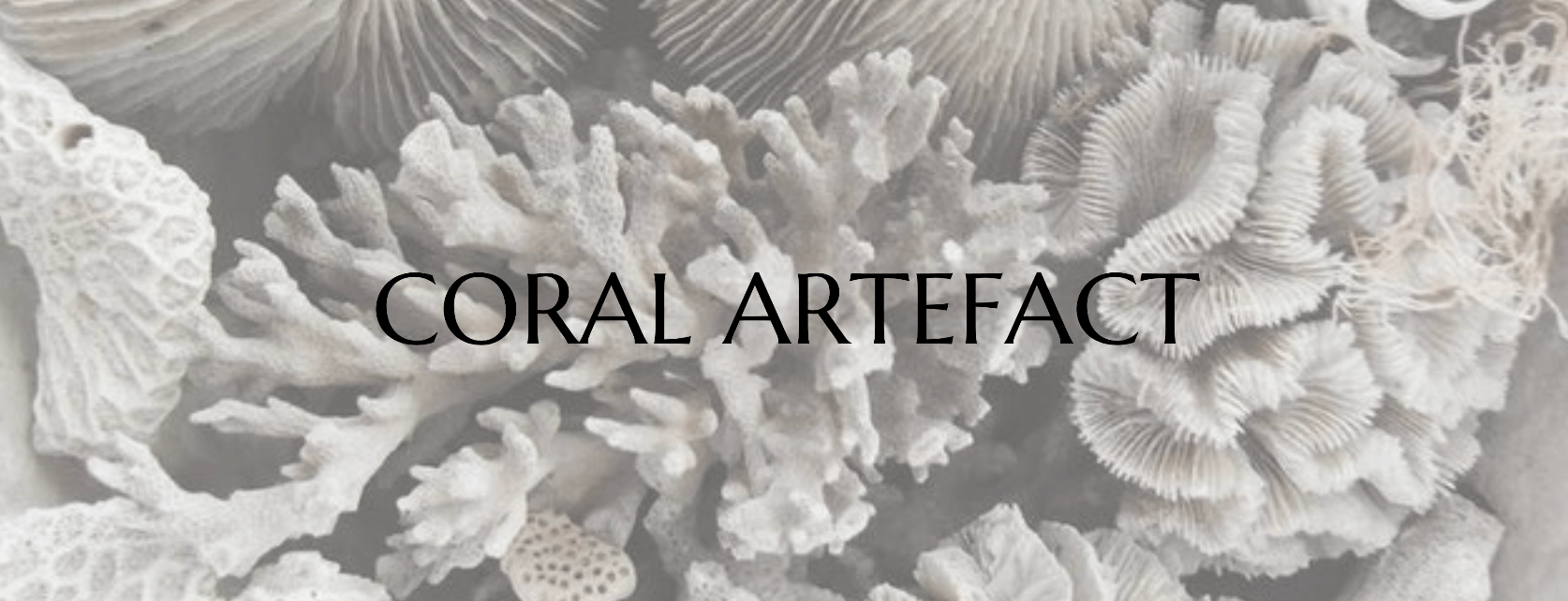
This project aims to raise awareness about what current pollution can cause on biodiversity. Coral reefs are the perfect example of this major problem since it is the most endangered ecosystem at present. Through this creation, I wanted to take up the idea of coral bleaching linked to the increase in water temperature, by creating a dress that gradually loses its color engraved with 3D printing technology and thermochromic pigments.¶
Why?¶
- My encounter with art
I've always had many passions and my hypersensitivity pushed me to be interested in the artistic field very young. I went to the dance conservatory for 15 years and participated in many shows. For a long time, dance was my only means of expression, it allowed me to communicate emotions when I couldn't do it with words. However, I often felt out of step with the other dancers at the conservatory. While they gave me the impression that they lived only for this, I dreamed of singing, painting, sewing, learning an instrument, drawing, writing or knitting. What I knew was that art was essential to me, whatever form it took, it was my way of communicating, of feeling free and of being me.
- My encounter with fashion
I discovered fashion by force of circumstance. After several health problems, I had to give up a career in dance. So I explored different practices that I wanted to do: painting, drawing and guitar, and then came the confinement. Then I discovered an old sewing machine in my parents' attic, and from that day was born a real passion for upcycling and creating clothes. Since then, I have a real fascination for fashion designers, especially for Iris Van Harpen, Alexander Mcqueen or Thierry Mugler who inspires me a lot. Today I like to believe that the disease was only present to put me on the right track.
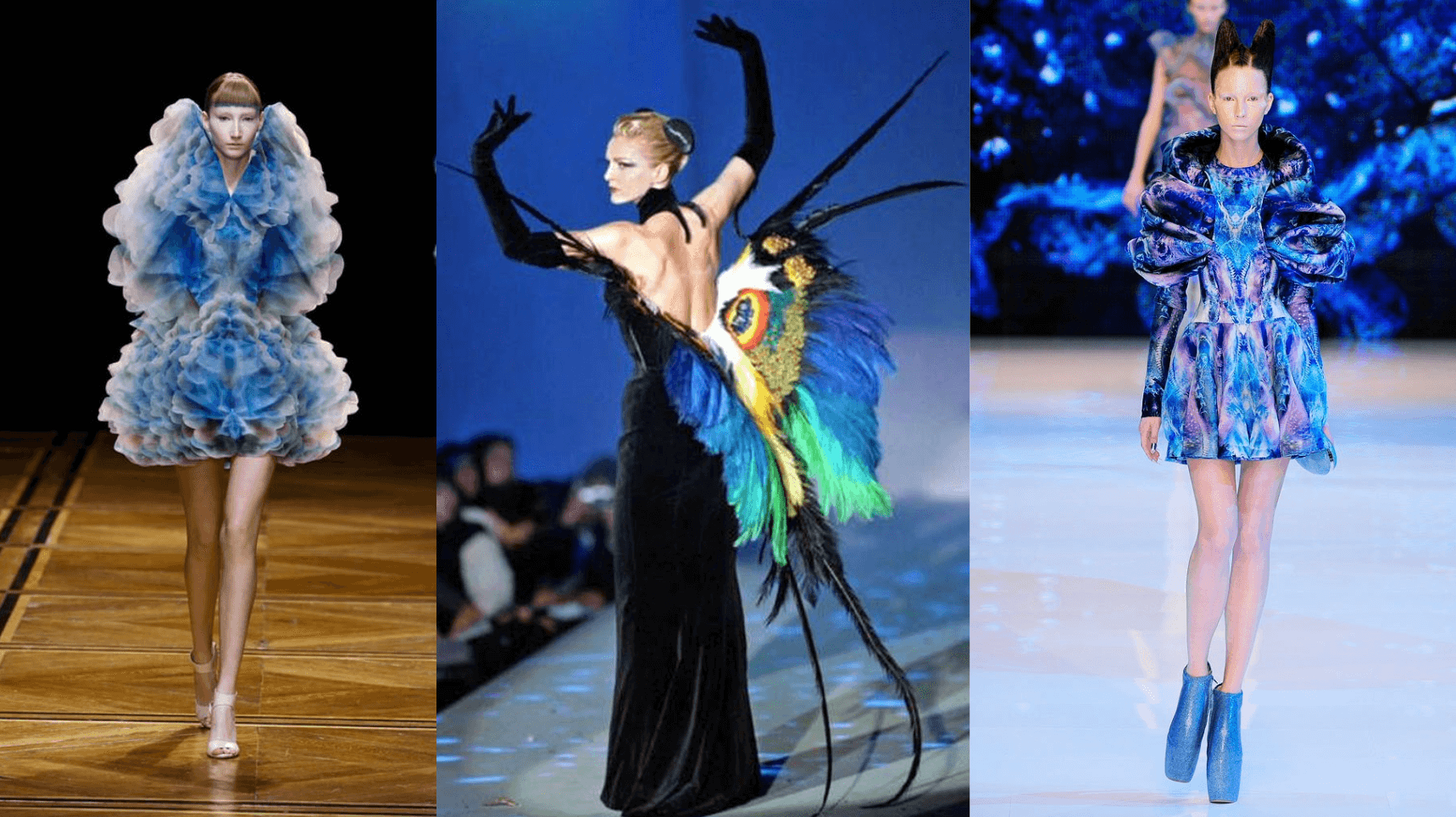
- My encounter with nature
I grew up in a place where nature was all around me. I was always amazed by what was around me: The vastness of the mountains, the intense color of the sky, the glistening of the snow in the sun. Unfortunately, man's damage to nature was pervasive and very visible. Today, the snow is less present, the forest in which I played as a child has been transformed into a housing estate and the river in which I used to bathe only exists in winter. My family is very close to nature, on my mother's side it is the mountains that are most important, on my father's side it is the sea and the oceans that fascinate me. A fascination that he transmitted to me through his stories in New Caledonia, the island where he grew up. Unfortunately, there too, nature tends to disappear, especially the coral reefs present all around the island, in the coral sea. This treasure of biodiversity is the most endangered ecosystem at the moment.
 Barrier Reef - New Caledonia
Barrier Reef - New Caledonia
What¶
My goal is to create a dress that would be worn in the context of a performance art piece to raise awareness about the disappearance of the most endangered ecosystem today: Coral Reefs. A project that leads to reflect on notions of progress, actions to be taken to defend natural resources. and leads us to realize the impact of our way of consuming on the environment. This dress will be inspired by the process of coral bleaching, caused mostly by humans and which leads to their death.
What if I could use art and fashion to defend the environment? Being passionate about fashion and nature is not an easy task these days. The fashion industry being one of the most polluting industries in the world, it made me ask myself a lot of questions about how I could make the two compatible. Today, I would like to take up the challenge of respecting and defending nature, while working in this field that I am so passionate about.
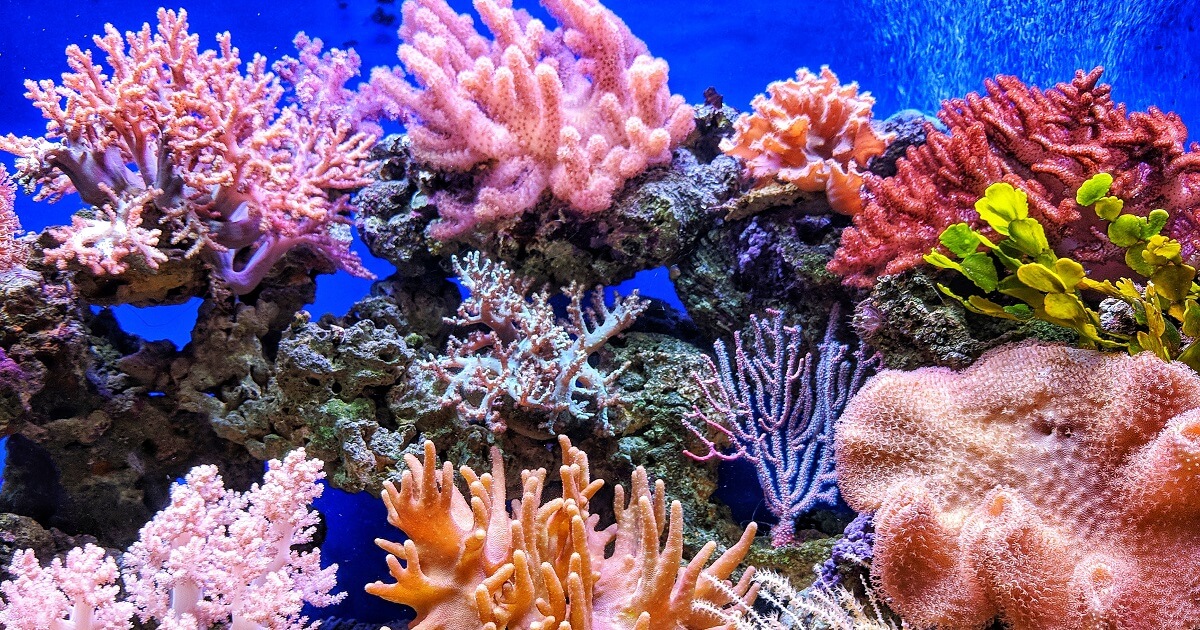
How?¶
- Use of dead stocks:
My goal is to reuse and upgrade dead company stocks.
The dead stock can result from several elements:
- Incorrect anticipation of consumer demand;
- A lack of stock monitoring;
- An undeveloped product;
- The occurrence of events causing a slowdown in sales such as the weather, the emergence of a new trend, a major event such as the health crisis, etc.
For a company, dealing with a dead stock is problematic and the consequences are significant:
- A loss of cash (products not sold) and therefore of profitability;
- Capital that could be earmarked for other better-functioning products, projects or investments;
- A consequent use of storage space in warehouses, which could be allocated to other products with better rotation.
In this way, reusing and upgrading dormant stocks can have a lower impact on the environment, while at the same time serving businesses.
 This is why I would like to call on Feat.coop, a cooperative based on the textile ecosystem of the Auvergne Rhône-Alpes region, the first employment and textile establishment area in France.
This is why I would like to call on Feat.coop, a cooperative based on the textile ecosystem of the Auvergne Rhône-Alpes region, the first employment and textile establishment area in France.
feat.coop is: a cooperative company that puts democracy at the center of its activities and guarantees the collective interest of a sustainable textile industry, by reselling dormant stocks of the surrounding textile factories.
¶
- Natural Dyeing:
The use of dormant fabrics sometimes requires some modifications in order to be upgraded. This is why I may have to go through vegetable, natural and ecological dyes, unlike chemical dyes, which are devastating for the environment. They alone are responsible for 20% of the world’s water pollution.

¶
- 3D printer
Using Rhino3D and Grasshopper:
I will have to go through software, in order to be able to use 3D printing and laser cutting afterwards.
Rhino3D is a 3D modeling software, very useful for 3D printing.
Grasshopper, on the other hand, is a software allowing to create parametric designs and therefore to create patterns easily, whether for the 3D printer.

¶
3D printer is a very eco-friendly innovation for many reasons:
1- During production, there are no waste. Thus, the amount of material used is equivalent to the weight of the object produced. It allows the creation of an infinite number of objects at a desired quantity while limiting the need for natural resources and simplifying 3D prototypes. In addition, the production of clothing using 3D printing would allow for the relocation of production sites.
The workplace is clean after production. This easily solves the problem of waste worldwide. Also, the intermediaries and logistic channels are reduced: the use of a means of transport is limited, so the fuel consumption as well as the CO2 emission will be reduced. Moreover, we would no longer need to order products from abroad. Everything can be done locally. Indeed, the local manufacturing of products reduces the transport distances between manufacturers and consumers and it will also reduce the need for packaging.
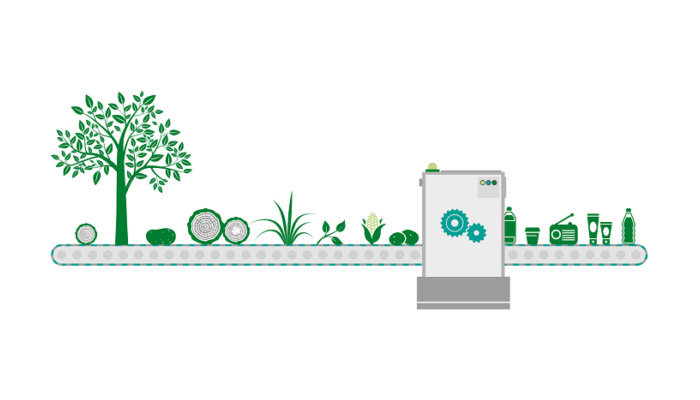
¶
2- Then, the 3D printer allows to make objects from identifiable and recyclable material. The most common raw material is plastic, although other materials can be found such as PLA, sand, algae... And, thanks to recycling, new ideas can be brought to life without the need to buy new materials. This means less waste and fewer resources.
¶
3- Finally, production is done on demand. We therefore favor small series. This considerably reduces the need for stock and the number of products to be thrown away. Which means less waste.
You have understood, 3d printing is ecological and innovative. Numerous projects are being developed in the field of 3D printing, including the printing of... coral reefs. Indeed, several projects aimed at restoring damaged reefs.
There is the King Abdallah University of Science and Technology (KAUST), which opts for sustainable and ecological coral restoration through 3D printing of calcium carbonate skeletons, which perfectly mimic the structure of corals. This innovative approach could help restore damaged reefs faster than ever before, as coral microfragments grow faster on the printed or molded calcium carbonate surfaces we create for them to grow, they do not need to build a limestone structure underneath.
 3D printing with calcium
3D printing with calcium
¶
Another European project called 3DPare aims to help fish and molluscs resettle near the Atlantic coast through artificial reefs. The ESITC of Caen in the North of France (Graduate School of Construction Engineering) designs the biomaterials that will be used for their construction. It is now possible to reconstruct the skeleton of A coral from a mixture of classic concrete and shell debris.
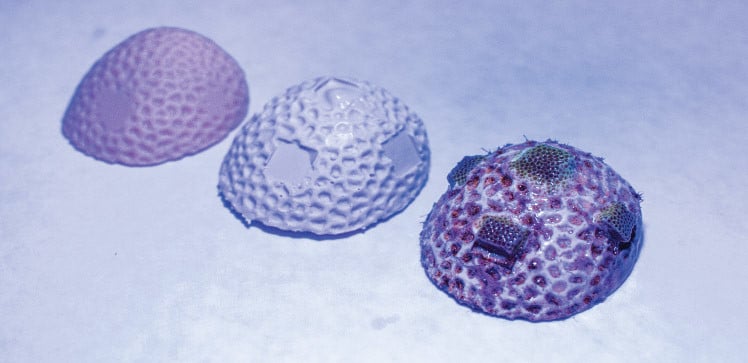 3D printed corals
3D printed corals
¶
With this biomaterial, the researchers aim to build reefs almost identical to those found naturally in the ocean and thus recreate a new ecosystem.
In France, several 3D printed reefs have already been set up in Monaco or Cap d'Agde.
Many countries are also working on this project, notably in Hong Kong where research has been carried out for several years.
What are corals? :¶
Corals are small animals called polyps living in symbiosis with micro algae, which provide them with most of their food and confer their colors, it is also a natural coastal protection able to attenuate 90 percent of the energy and height of the waves. Thus, the death of coral in some islands of the Pacific following a bleaching episode between 2015 and 2017 was followed by a doubling of the power of the waves reaching the real coast a dramatic erosion. In addition, at least 30 million people depend directly on the coasts and in island communities, where they provide the bulk of food production income and livelihoods. The disappearance of coral reefs is likely to lead to a fall in fish populations, and consequently have an impact on the diet and health of people living in coastal regions. The fishing in the reefs generate about 6 million employees and have in some place a central role for tourism.
It covers only 0.1 percent of the surface of the ocean floor, and yet it is home to 25% of known marine species, some of which feed millions of people. It is considered that 1 km square of tropical reefs contains more species than can be found on the whole European coast.
Today, 50 percent of reefs that have disappeared since 1980 on a planetary scale, and it goes up to 80 percent in some places as in the Caribbean.
 Coral death, also called bleaching process
Coral death, also called bleaching process
Human versus Coral¶
The strong increase of the co2 in the atmosphere influences the acidity of the seas which in turn increases. Since the beginning of industrialization the acidity has increased by 30%. Corals feel very sensitive to the modification of the water ph which then prevents them from developing. But the Ph is not the only factor, the increase in water temperature and heat waves also plays a major role, the polyps are indeed very sensitive to the change of temperature and this causes the loss of their algae which, as we have seen above, are necessary to their diet. Their living colors will then disappear and we will see only the white color of their skeleton. It is expected that 90% of the oceans will have disappeared in less than 30 years. This makes it one of the priority ecosystems to protect.
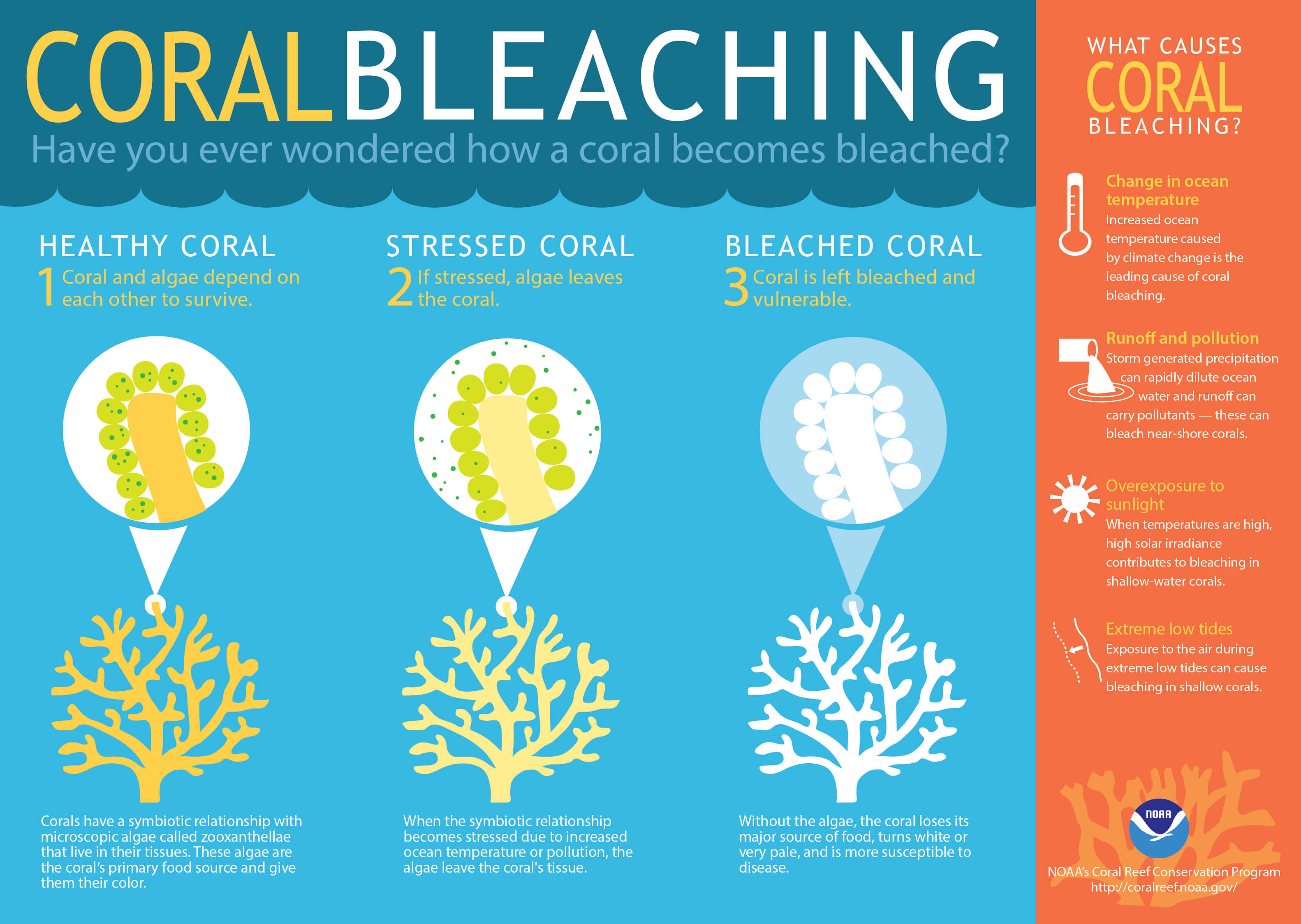
¶
During the bleaching process, the micro-algae that give them their colors detach from their walls and this is the reason why they become white.
They absorb wave energy and contribute to the reduction of erosion of coastal edges. They reduce damage from storms, hurricanes and other cyclones, and to some extent, tsunami energy. In doing so, they protect both the ecosystems between the reefs and the coasts, such as lagoons with seagrass beds, and the human settlements on the seashore.
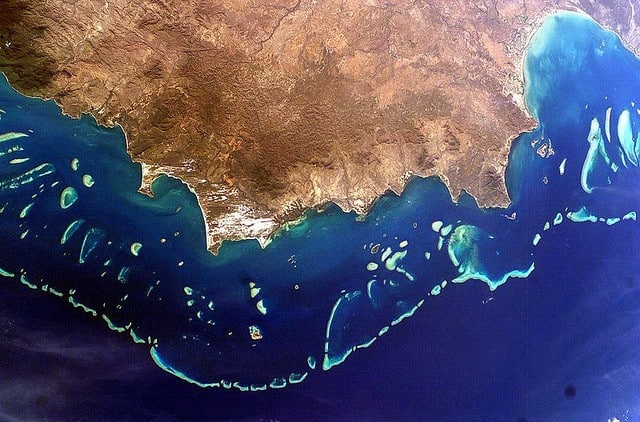 This is a photo seen from the sky, of the largest coral reef in the world, protecting the Australian coasts.
Approximately 500 million people worldwide depend on coral reefs for both food and coastal preservation. If we lose the corals, by 2100, we could have waves twice as big in the lagoons.
This is a photo seen from the sky, of the largest coral reef in the world, protecting the Australian coasts.
Approximately 500 million people worldwide depend on coral reefs for both food and coastal preservation. If we lose the corals, by 2100, we could have waves twice as big in the lagoons.
¶
And now, it’s time to process!